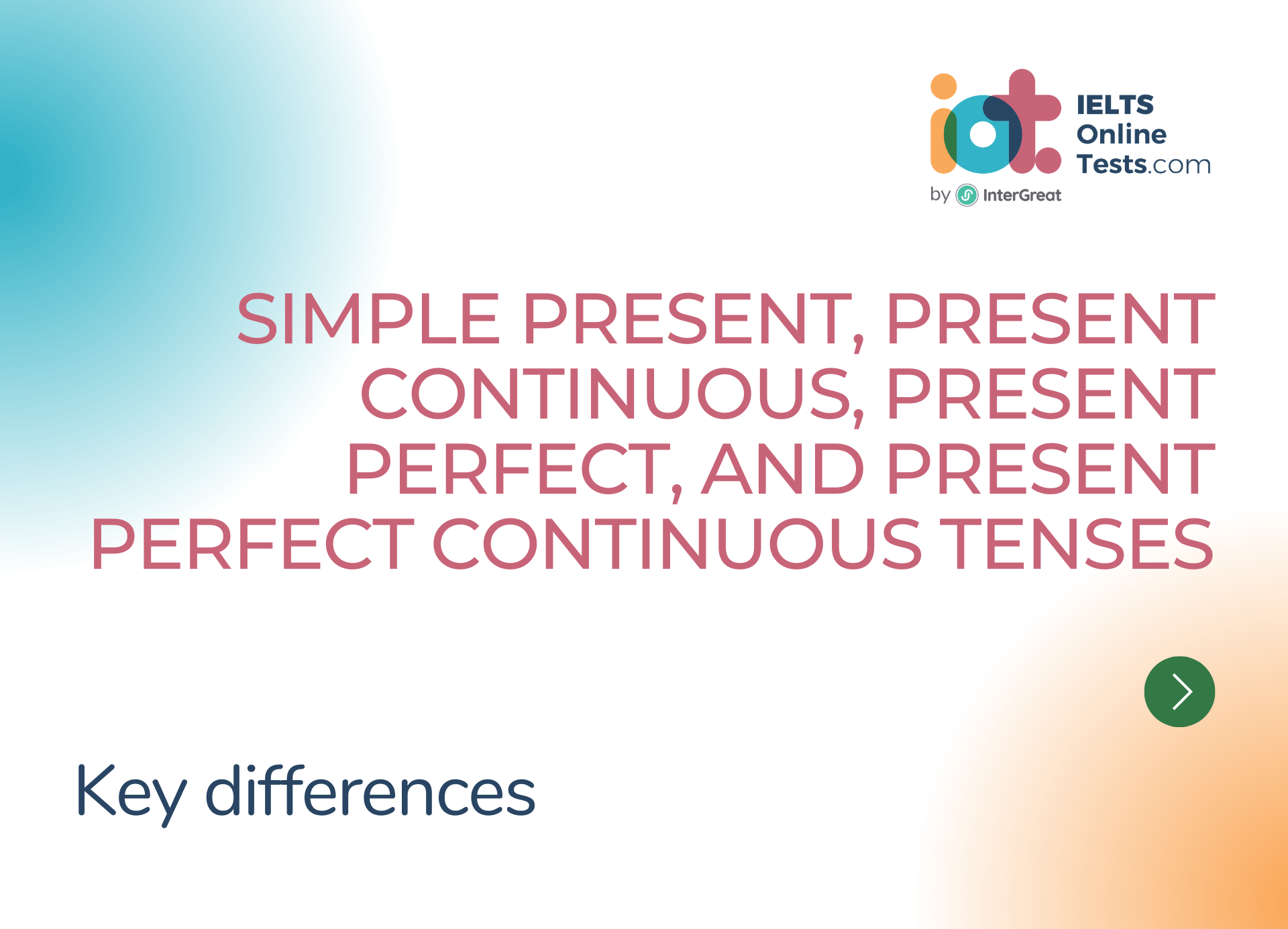
Key differences between the simple present, present continuous, present perfect, and present perfect continuous tenses
Here's a side-by-side comparison of the 4 tenses:
Here's a side-by-side comparison of the simple present, present continuous, present perfect, and present perfect continuous tenses:
Simple Present Tense:
- Used for general truths, habits, and routines.
- Examples:
- "I eat breakfast every morning."
- "She works at a bank."
Present Continuous Tense:
- Used for actions happening at the present moment or around the current time.
- Examples:
- "I am studying for my exam right now."
- "They are playing soccer."
Present Perfect Tense:
- Used for actions or states that started in the past and have a connection to the present moment.
- Examples:
- "I have visited that city before."
- "She has finished her work."
Present Perfect Continuous Tense:
- Used for ongoing actions or states that started in the past, continue in the present, and may continue into the future.
- Examples:
- "She has been studying for three hours."
- "They have been working on the project for weeks."
Key Differences:
- Simple Present: Describes general truths, habits, or routines.
- Present Continuous: Describes actions happening at the present moment or around the current time.
- Present Perfect: Describes actions or states that started in the past and have a connection to the present.
- Present Perfect Continuous: Describes ongoing actions or states that started in the past and continue in the present.
The choice of tense depends on the specific context and the intended meaning. The simple present is used for general statements, while the present continuous focuses on actions in progress. The present perfect is used to discuss past actions with present relevance, while the present perfect continuous emphasizes ongoing activities that started in the past and continue to the present.




